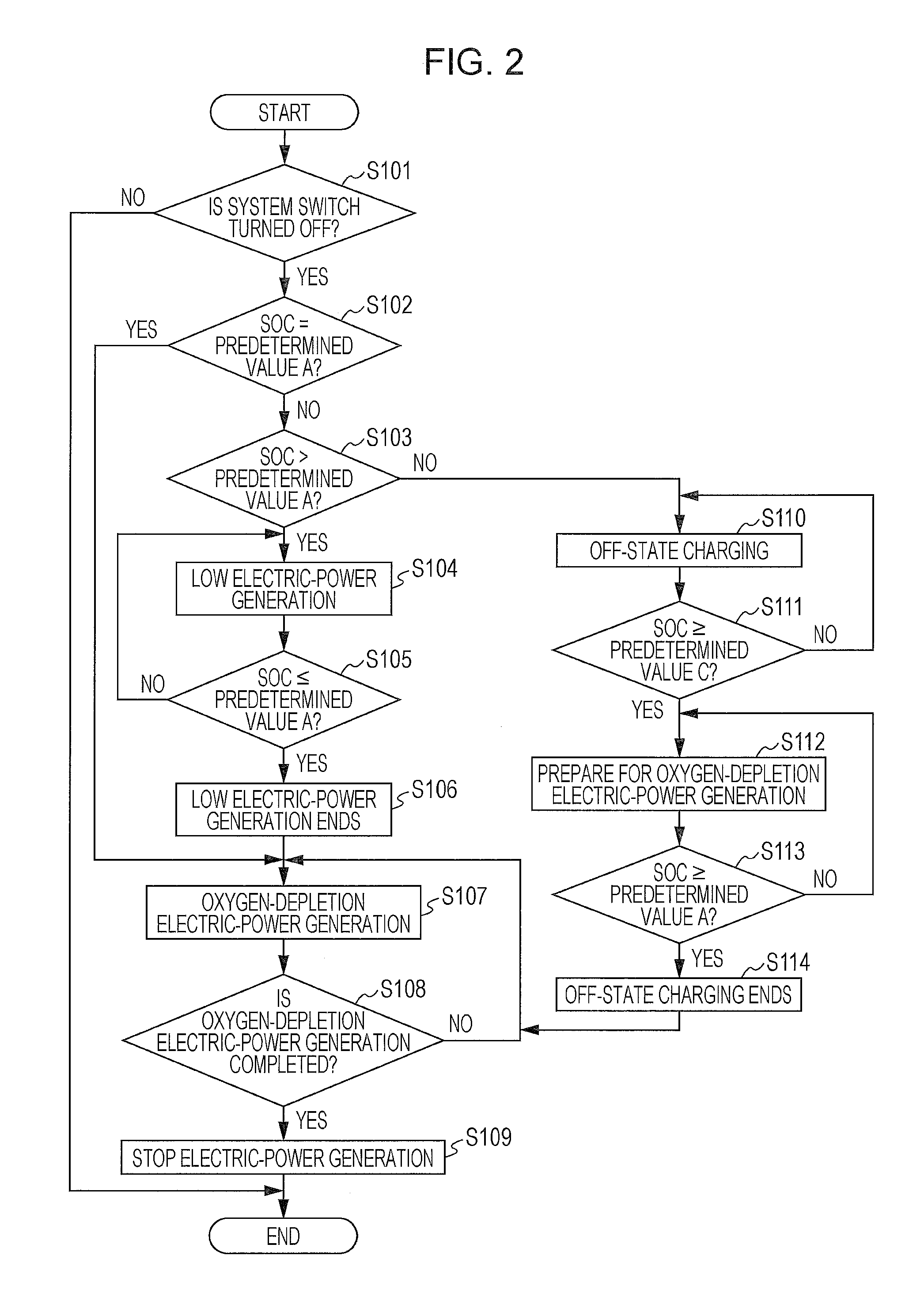Fuel cell system and method for deactivating fuel cell system
- Summary
- Abstract
- Description
- Claims
- Application Information
AI Technical Summary
Benefits of technology
Problems solved by technology
Method used
Image
Examples
first embodiment
[0038]Next, a method for deactivating a fuel cell system according to a first embodiment will be described.
[0039]An amount of electric power generated in the fuel cell 1 will be defined as a gross output W1, a consumed electric power by the auxiliary device 42 actuated for obtaining the gross output W1 will be defined as W2, and an electric power obtained by subtracting the consumed electric power W2 of the auxiliary device 42 from the gross output W1 of the fuel cell 1 will be defined as a net output W3 of the fuel cell 1 (W3=W1−W2).
[0040]In the cathode circulation electric-power generation performed as the oxygen-consumption electric-power generation, the supply of reaction gases (i.e., hydrogen and air) is controlled such that the net output W3 becomes a positive value. Therefore, during the cathode circulation electric-power generation performed as the oxygen-consumption electric-power generation, the net output W3, which is a positive value, is stored into the high-voltage batt...
second embodiment
[0081]Next, a method for deactivating a fuel cell system according to a second embodiment of the present application will be described.
[0082]In the method for deactivating the fuel cell system according to the first embodiment, the net output W3 of the fuel cell 1 is constantly a positive value in the cathode circulation electric-power generation performed as the oxygen-consumption electric-power generation. Therefore, it is necessary to ensure the required free capacity in the high-voltage battery 41 before commencing the oxygen-consumption electric-power generation. In order to achieve this, low electric-power generation is performed so as to reduce the SOC in the high-voltage battery 41 to the predetermined value A.
[0083]In contrast, in the second embodiment, the cathode circulation electric-power generation performed as the oxygen-consumption electric-power generation is based on variable electric-power generation so that the low electric-power generation in the first embodiment...
PUM
 Login to view more
Login to view more Abstract
Description
Claims
Application Information
 Login to view more
Login to view more - R&D Engineer
- R&D Manager
- IP Professional
- Industry Leading Data Capabilities
- Powerful AI technology
- Patent DNA Extraction
Browse by: Latest US Patents, China's latest patents, Technical Efficacy Thesaurus, Application Domain, Technology Topic.
© 2024 PatSnap. All rights reserved.Legal|Privacy policy|Modern Slavery Act Transparency Statement|Sitemap



